
Karoonjhar as Kin
Areesha Khuwaja / Pakkhee
Community Collaborator: Dileep Permar
Some beings don’t speak in words.
The mountain is one of them.
Here, the land is not a backdrop.
It is memory, body, breath.
Karoonjhar doesn’t stand still for you to look at —
it reveals itself,
like a sentinel: alive, playful , and sometimes, wounded.
This page is not a record.
It’s a series of encounters —
where stone becomes kin,
water turns to story,
and wild herbs carry the scent of forgotten knowing.
What follows isn’t documentation.
It’s a kind of listening.
Maybe even a language —
to help us remember how to connect with the land again.

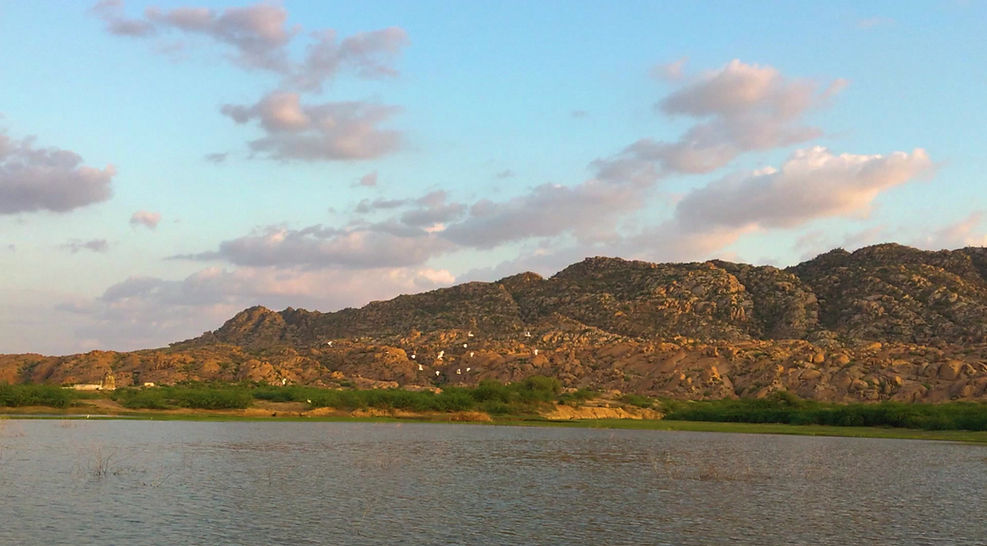
How do you meet a mountain on their own terms?
How do you listen until stone begins to speak?

The mountain doesn’t show all at once.
Some forms stay hidden, waiting to be seen.

You are in nature’s museum.
These are not monuments —
they are shapeshifting installations,
carved slowly by time and wind and waiting.
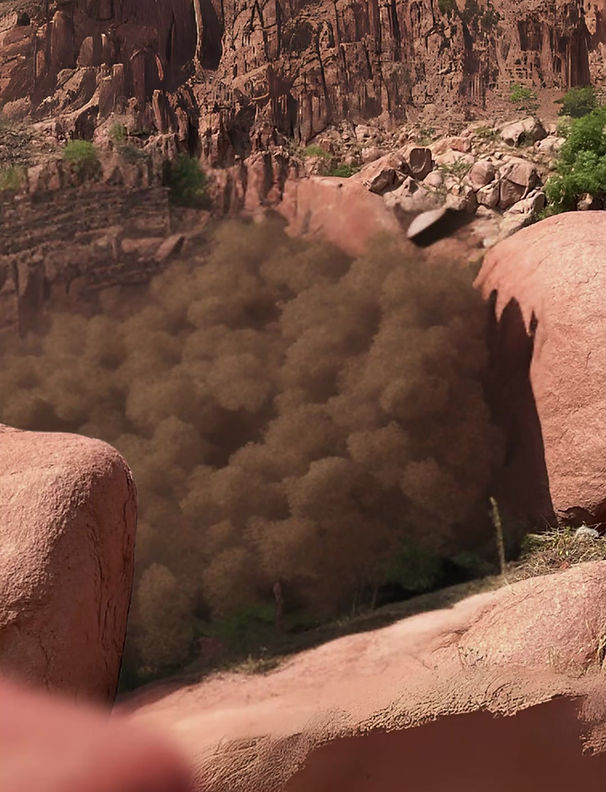

The mountain rearranges itself
depending on the light, the season, the one who’s looking.


"There is a language beyond human language,
an elemental language,
one that arises from the land itself."
- Linda Hogan
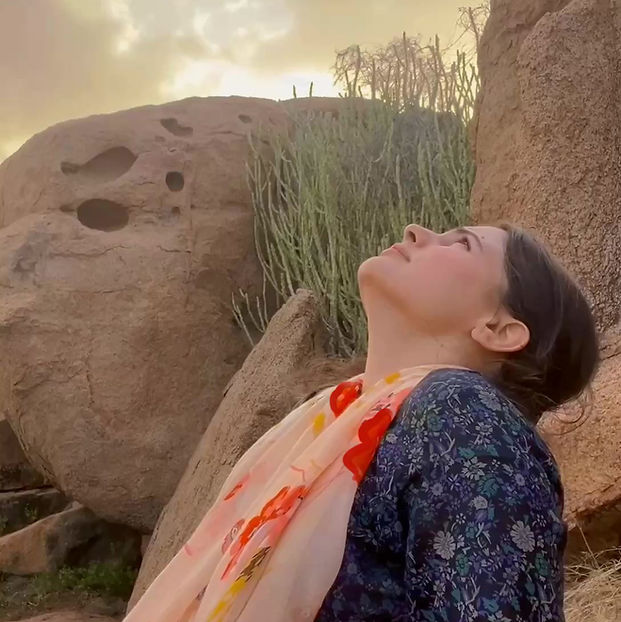
What does it mean to receive the land in all its moods: playful, harsh, abundant, grieving?



Can tending to land as kin awaken rituals of care we have forgotten?
In allowing the land to transform us, do we begin to transform our future with it?
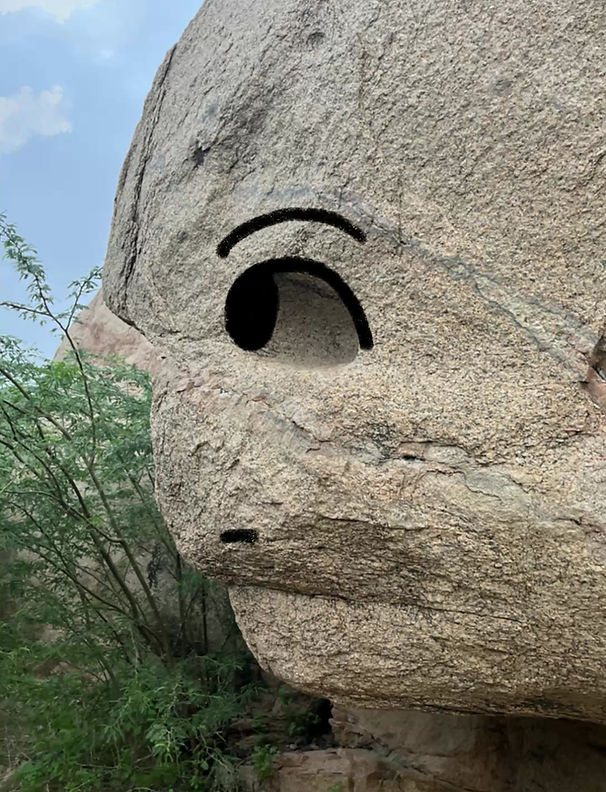

Like water, transformation is never still. It moves, carves, carries us forward.
Here, water turns to story.
In the time of the Jains, water was sacred. Never sold, never owned.
At Kajlasar, they say Jain women would bathe before dawn, their kohl lining the surface, staining the water with memory.





These are not ordinary rock formations.
The shapes of the granite matter hold rain, direct it, form waterfalls that still run clear and drinkable.
In a land where every drop counts, the hills remember how to gather and give.

These stones have also sheltered seekers.
For the Jains, the caves of Karoonjhar were places of meditation and enlightenment.
The mountain taught them how to sit with time, how to let stone, breath, and spirit flow together.

To frame land as scenery amputates its time signature.
The system severs bodies from soil, memories from place, voices from kinship.


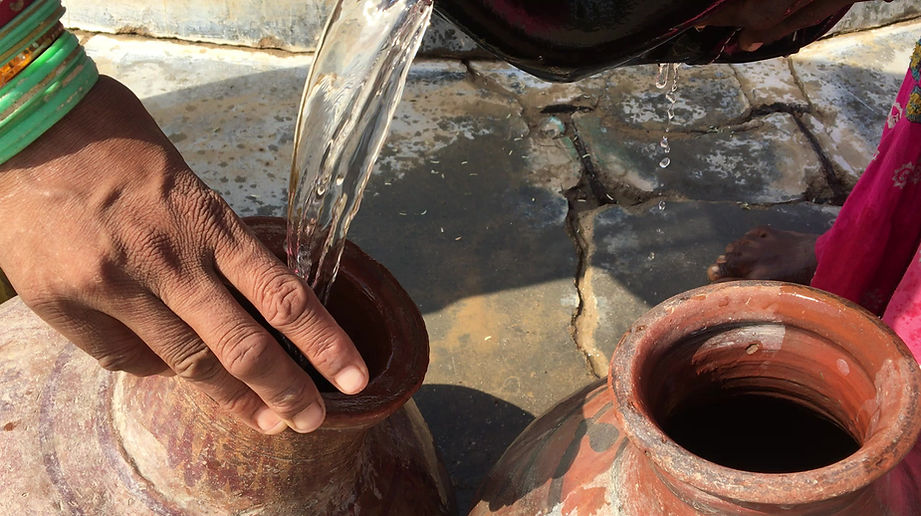
Healing lives in remembering. In reconnecting. In soft slowness. In community.


Each year on Kanhooro (Krishna Janmashtami),
pilgrims from nearby villages carry the adorned murti of Krishna to a pond.
They sing as they lower him into the water.
And they walk back, singing Kanhooro Kodio, asking only this:
May your grace remain through all twelve months.




Around this same mountain, life continues in quiet devotion.
Cattle graze among the rocks.
Women farm nearby, their footsteps steady in the red soil.
The mountains give what they can:
water, inspiration, grass, shelter, medicine, rhythm.
Everything is received with trust.
Here, the mountain is not a metaphor.
It is a brother.

And so the people sing:
Doonger ne ni wado wecho, doongar maaro bha la
Don’t sell this mountain, the mountain is my brother.
A song passed from voice to voice,
from gatherings to quiet corners,
until it lives in every child’s mouth,
every woman’s call,
every man’s memory.



The mountains speak in the language of slowness. Presence is their grammar.
To listen is a practice.
May we begin.

Artist Statement
Areesha Khuwaja
Community Collaborator: Dileep Permar
My practice is guided by Shah Abdul Latif Bhittai, who curated Sindh’s myths and folklore as portals of transformation. His work is not only tales of separation and reunion, but of deep initiation. His verses remind us that help can arrive from unexpected kin: from mountains for Sassui, from rivers, soil, seagulls, and storks for Sohni. I like to think that I inherit his worldview, and my language for communicating that inheritance is animism. With deep respect, I create with the mountains, listening until their stories seep through their holes and their rituals breathe again.
In a world that severs bodies from soil, memories from place, and voices from kinship, my work becomes an act of remembering and reconnecting. Restitution, for me, is not about return alone. It's also emotional.
It means letting the mountain speak again, keeping the soil warm for seeds still waking.
In Echoes of Karoonjhar, our collaboration brings together two lenses: one rooted in archival care, the other in visual mythmaking. Dileep Permar walks the land like a living index: holding stories of its people, festivals, wildlife, and sacred rhythms with the quiet care of someone who belongs. Areesha Khuwaja works through an ethnographic and creative archival lens, re-membering Karoonjhar as a site of layered sacredness, erasure, and survival. Her practice bridges cross-border interviews, ecological grief,
oral storytelling, and myth-making by animating what official histories leave out.
Together, we treat Karoonjhar as a living, shape-shifting archive, not just of human memory, but of land-based cosmologies.
Our work moves across time: from the kohl-stained ponds of Parinagar to the contemporary grief of granite extraction.
We try to listen for what the land remembers, even when people are made to forget.
This collaboration is a refusal of erasure, a map, a way of seeing, sensing, and re-membering for those who will come after us.


%20_edited.jpg)